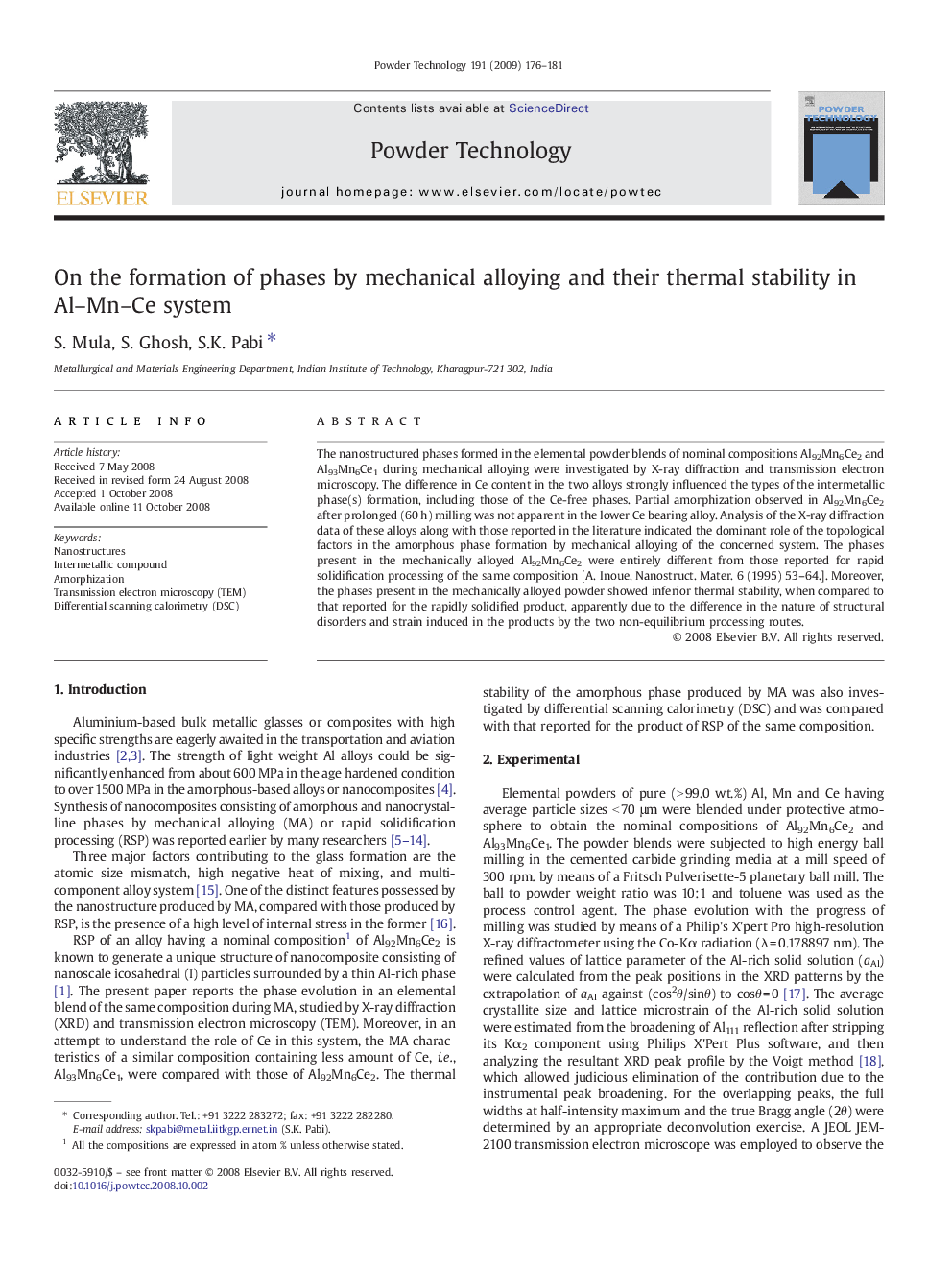| Article ID | Journal | Published Year | Pages | File Type |
|---|---|---|---|---|
| 238580 | Powder Technology | 2009 | 6 Pages |
The nanostructured phases formed in the elemental powder blends of nominal compositions Al92Mn6Ce2 and Al93Mn6Ce1 during mechanical alloying were investigated by X-ray diffraction and transmission electron microscopy. The difference in Ce content in the two alloys strongly influenced the types of the intermetallic phase(s) formation, including those of the Ce-free phases. Partial amorphization observed in Al92Mn6Ce2 after prolonged (60 h) milling was not apparent in the lower Ce bearing alloy. Analysis of the X-ray diffraction data of these alloys along with those reported in the literature indicated the dominant role of the topological factors in the amorphous phase formation by mechanical alloying of the concerned system. The phases present in the mechanically alloyed Al92Mn6Ce2 were entirely different from those reported for rapid solidification processing of the same composition [A. Inoue, Nanostruct. Mater. 6 (1995) 53–64.]. Moreover, the phases present in the mechanically alloyed powder showed inferior thermal stability, when compared to that reported for the rapidly solidified product, apparently due to the difference in the nature of structural disorders and strain induced in the products by the two non-equilibrium processing routes.
Graphical abstractThe difference in Ce content in Al–Mn–Ce system strongly influenced on the type of phase formation including the type of intermetallic compounds by MA. Partial amorphisation observed in Al92Mn6Ce2 after prolong (75 h) milling was not apparent in Al93Mn6Ce1. The phases synthesized in Al92Mn6Ce2 by MA were entirely different from those reported for rapid solidification processing of the same composition.Figure optionsDownload full-size imageDownload as PowerPoint slide
